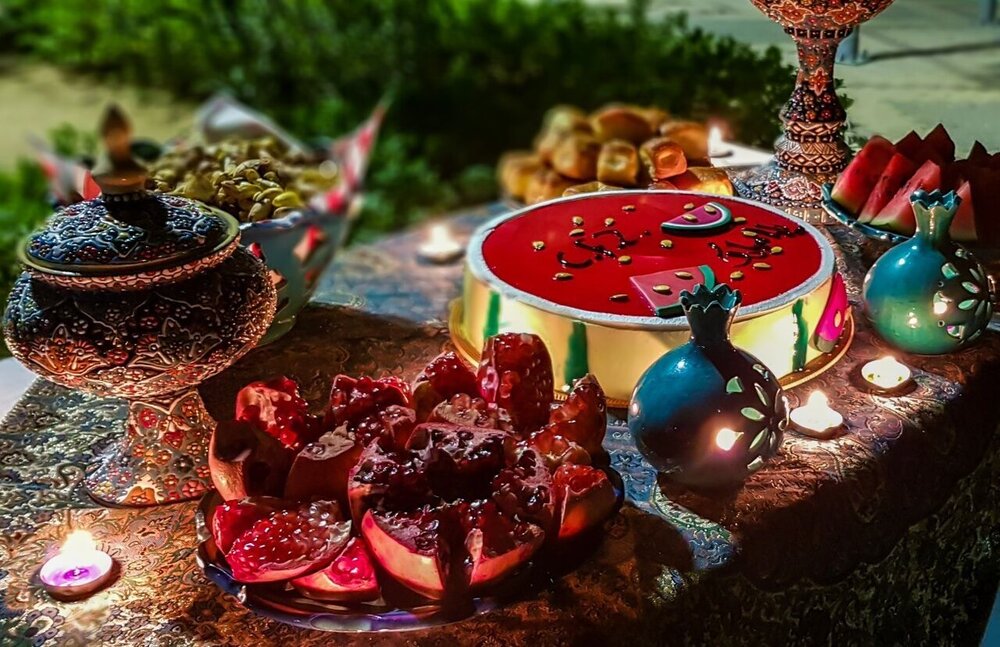Iranian celebrations, music festival one step closer to UNESCO register

TEHRAN – Iranian celebrations and festivities of Yalda, Chaharshanbeh-Suri, Mehregan, and Sadeh as well Regional Music Festival of the country are closer to being inscribed on UNESCO's Intangible Heritage list, ISNA reported on Wednesday.
The reason behind this is their recent registration on the List of Intangible Cultural Heritage alongside the Silk Roads, which significantly paves the way for becoming UNESCO listed in the future, the report added.
Registration for these festivals took place at an online world summit hosted by the International Information and Networking Centre for Intangible Cultural Heritage in the Asia-Pacific Region under the auspices of UNESCO (ICHCAP) in South Korea, and the International Institute for Central Asian Studies (IICAS) in Samarkand on December 10.
The Regional Music Festival of Iran was selected as the only music festival at the meeting.
The festival, which has been held regularly for 14 years, brings together dozens of different types of Iranian music, such as Kurdish, Lori, Bakhtiari, Turkmen, Baluchi, Qashqai, Khorasani, Gilaki, Mazandarani, and others.
The diversity of Iranian instruments and music, and the possibility of establishing cultural exchanges with neighboring countries through regional music are just a few of the important factors that Iran presented for inscribing this festival as a World Heritage.
Yalda
Yalda (the birth of a new sun) and Noruz or Persian New Year (the birth of a new day) are amongst the most popular ancient Persian festivals, which are also celebrated by some countries in western and central Asia.
Also called, Yalda Night, the occasion is celebrated on the eve of the winter solstice, which falls on the last day of Azar (the last month of autumn in the Iranian calendar year). On that graceful night, the winter chill is vanquished and the warmth of love embraces the entire family. It’s a time for pleasant family reunions that entails laughter, merriment, and good cheer.
According to the UNESCO website, Yalda ceremonies, in the best way, point to cultural diversity and human creativity, especially when one considers the wide range of the communities that celebrate it.
Chaharshanbeh-Suri
As every last Tuesday of the Iranian calendar year comes, millions of Iranians make bonfires at sunset to jump over the fire till midnight to observe Chaharshanbe-Suri, just days before Noruz, the New Year holidays.
The festival is held on the night before the last Wednesday of the year when families and friends gather by bunches of open fires and keep them lit till dawn.
Narratives say that ancient Iranians originally observed such time-honored fire festivity in a bid to ward off all the misfortunes and bad omens with hopes that their wishes would come true.
In ancient Persia, the fire was considered a sacred element, a belief that modern Zoroastrians still adhere to. The fire has been supposed to give people its warmth and energy and take away their paleness, sickness, and problems in return.
Mehregan
Meheregan, the largest Iranian festival after Noruz, marks the autumnal equinox when day and night are equal and it dates back to ancient times when the start of autumn brought the start of the new year.
Mehregan typically brings together clusters of Iranian Zoroastrians in celebration of Mithra, an ancient goddess of friendship, affection, and love. The celebrations are usually opened up with keynote speeches by Zoroastrian religious figures and officials, followed by Shahnameh recitations, exciting contests, and other joyful customaries.
A key feature for the event is large spreads in purple laden with various ingredients, dishes, and elements each on behalf of a particular belief. Fruits, vegetables, dried nuts, sweets, rosewater, grilled lamb meat, lotus seeds, and silver coins, and a scale are typically placed, the latter symbolizes autumnal equinox.
Mehregan falls on the 196th day of the Iranian calendar year that usually equals October 2 in the Gregorian calendar. The festivity was used to be a traditional autumn harvest festival with several accounts of its origins.
Sadeh
Jashn-e Sadeh, which usually falls on January 30, is named after the number one hundred (Sad in Farsi). The event marks 50 days and 50 nights before Noruz (the beginning of the Iranian calendar year on March 21). The common belief emphasizes that it is a mid-winter ritual to celebrate the date when the earth starts warming up.
The festivity is nowadays more popular among Iranian Zoroastrians in the cities of Yazd, Tehran, Shiraz, and Kerman. Narratives say that the feast is to remember the mythical discovery of fire. That’s why they set fire to a big pile of wood when the event reaches its climax.
The origins of the festival are somewhat ambiguous and there is no trace of this ceremony in the Zoroastrian holy texts. However, some historians suggest the ceremony existed even before Zoroastrianism, the world’s oldest monotheistic religion.
Some say Sadeh is a festivity to honor fire and to defeat the forces of darkness, frost, and cold. Several mythological accounts, however, connect the festival to the origins of human beings. According to Persian mythology, Houshang, the second king of the world, discovered the fire when he tried to hit a dragon with a stone. He reportedly threw a flintstone that struck against another flint stone causing a spark and generating fire.
The time-honored Zoroastrian rituals are widespread in Iran. Noruz, Yalda Night -which takes place on the longest night of the year, and Chaharshanbeh Souri - in praise of the spring, are examples of such ceremonies that even nowadays nearly all Iranians observe.
ABU/AFM
Leave a Comment